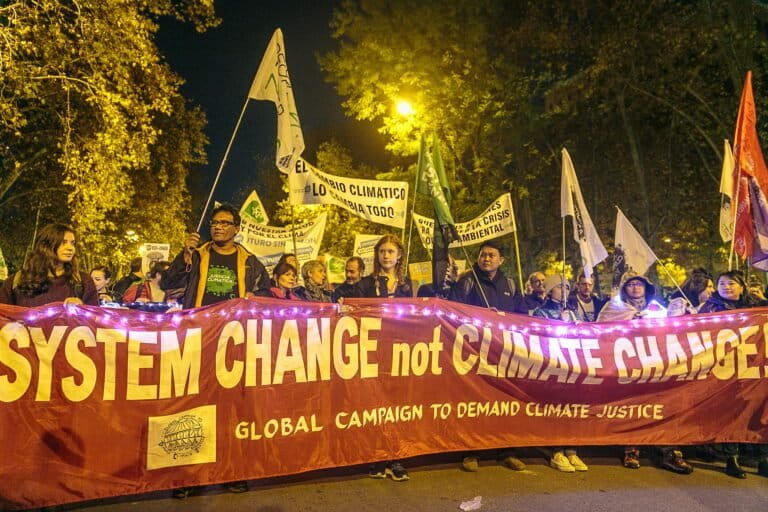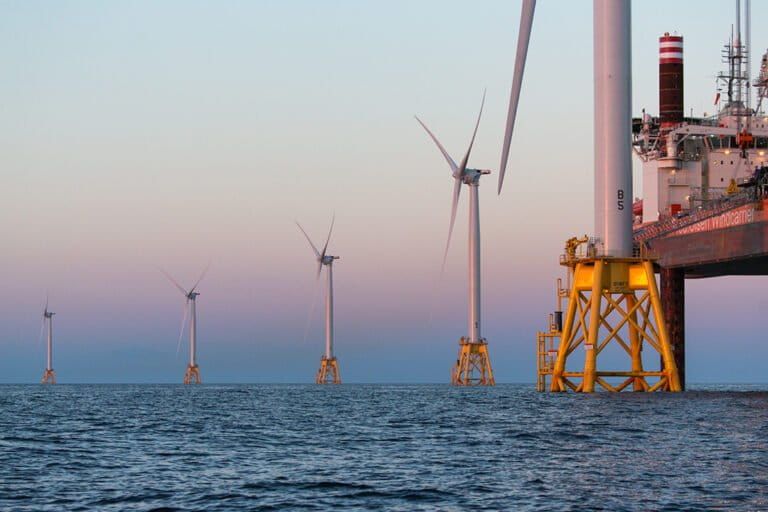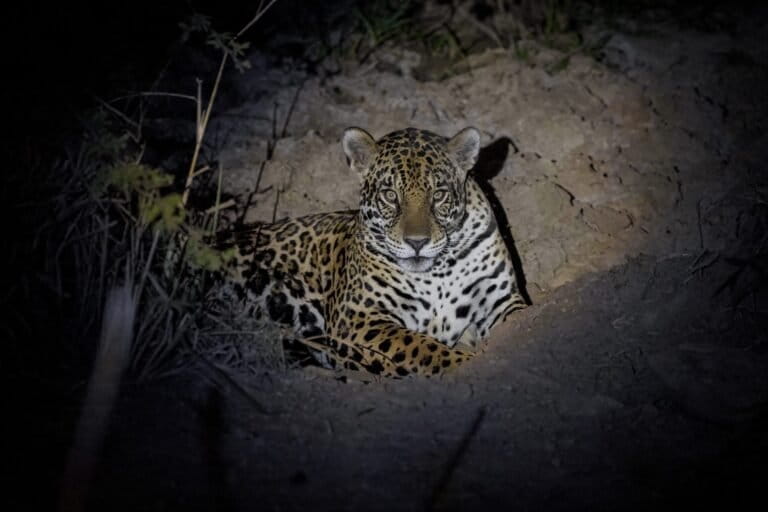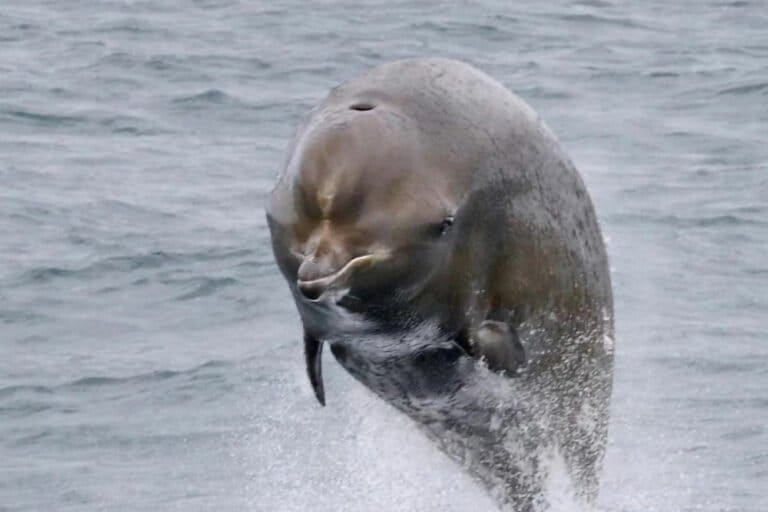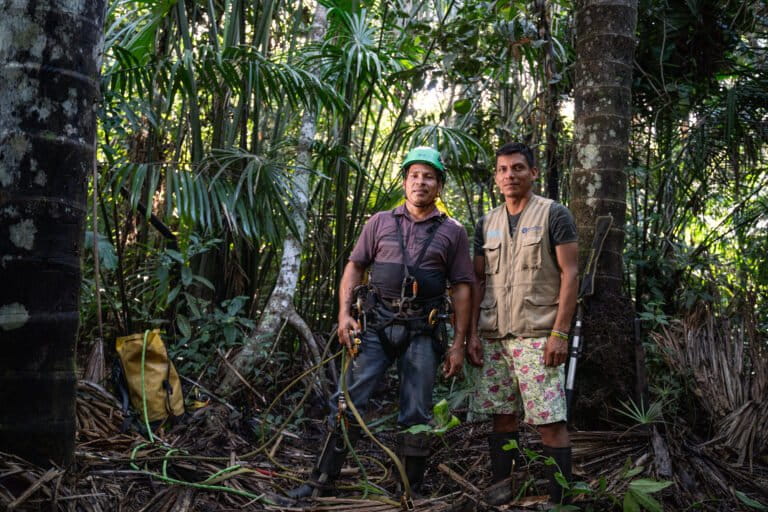- Scientists recently identified a previously undiscovered marine ecosystem in the waters around the Maldives, known as the “trapping zone,” about 500 meters (about 1,600 feet) below the surface.
- The researchers say the trapping zone refers to a region of subsea vertical cliffs and shelving terraces that “trap” small, migrating mesopelagic organisms, which attract pelagic predators like sharks, tuna and large fish.
- Prior to this mission, very little was known about the Maldivian sea below 30 m (about 100 ft), despite the country’s total area consisting 99% of water.
- The researchers say trapping zones likely exist in the waters around other oceanic islands with similar topography, and that they’re already gathering evidence of such an ecosystem in the waters of the Chagos archipelago, south of the Maldives.
In September, scientists boarded submersibles and dived into the waters surrounding the Maldives, a nation of islands peppered across the Indian Ocean. Very little is known about the Maldivian sea below 30 meters (about 100 feet), despite the country’s entire area consisting 99% of water. The Nekton Maldives Mission, a collaboration between scientists and the Maldivian government, sought to fill this knowledge gap by surveying the country’s offshore waters from the surface to a depth of about 1,000 m (about 3,300 ft).
During this mission, the researchers encountered something surprising: a previously undiscovered ecosystem they’ve since named the “trapping zone.”
This recently identified ecosystem exists at a depth of about 500 m (about 1,600 feet), where layers of volcanic rock and fossilized reefs below the islands form vertical cliffs and shelving terraces. These physical structures appear to “trap” an array of tiny mesopelagic organisms — known as micronekton — that migrate to the surface each night and dive down to the deep ocean at night. But the species don’t seem to find their way back to the deep sea when the sun rises, which is why the researchers called it the “trapping zone.”
The proliferation of micronekton in the trapping zone attracts pelagic predators like sharks and tuna, as well as large deep-water fish like tinselfish, spiky oreos and snake mackerel, the researchers said.

“It was unexpected and new. We weren’t looking for it,” Alex Rogers, a conservation biologist at the University of Oxford and the science director of the research initiative REV Ocean, told Mongabay. He said what made the team realize they’d found a new ecosystem was the presence of the pelagic predators that usually feed at seamounts.
“I realized that it was highly likely that those seamount fish were feeding on micronekton trapped against the seafloor on the island slopes,” said Rogers, who spent about 30 hours underwater as part of the mission.
Oliver Steeds, chief executive and mission director of Nekton, the marine research organization leading the Maldives mission, said the discovery of the new ecosystem was a “great surprise.” Still, he said he and his colleagues had been hoping to find something new since no one had previously explored this part of the ocean.
“We still don’t know … the range of this ecosystem, if it’s from 350 [meters] or down to 550 [meters],” or about 1,150 to 1,800 ft, Steeds told Mongabay. “So lots of open questions around it that we obviously need to unpack.”
The most similar ecosystem to the trapping zone would be seamounts, underwater mountains — typically formed by extinct volcanoes — that can rise thousands of meters above the seafloor.
“We know that seamounts … block the migration of these migrating animals and that predators resident on seamounts feed on them,” Rogers said. “It was the same predators that we saw in the slopes of the Maldives that triggered this idea that we were seeing trapping zone dynamics in operation on slopes of islands rather than just seamounts.”

Rogers said he expects the trapping zone isn’t unique to the Maldives but would be present around other oceanic islands with a similar topography. He said he’s already finding evidence of a trapping zone in the sea around the Chagos archipelago, about 1,000 kilometers (620 miles) south of the Maldives, where Nekton and REV Ocean are currently undertaking another deep-sea science mission.
“It’s the same,” Rogers said. “Some of the species might be different … but it’s certainly a result of the same ecological process that we saw in the Maldives.”
Amelia Bridges, a deep-sea ecologist and seamount expert at the University of Plymouth in the U.K., who is not involved with Nekton, said she’s excited to hear about the identification of the trapping zone ecosystem and that it likely has many similarities to seamount ecosystems.
“Oceanic islands are effectively seamounts with the top sticking out the water, but as they both provide hard substrate, they typically harbor lots of the same ecosystems,” Bridges told Mongabay. “If there are terraces and plateaus along the flanks of them, then it makes sense that the ‘trapping zone’ seen here is similar to what is seen when seamounts ‘trap’ organisms above their summits.”
The Nekton Maldives Mission began on Sept. 5 and operated for 34 days. During the expedition, a team of 25 scientists mapped about 294 square kilometers (114 square miles) of the ocean — almost equivalent to the Maldives’ total land mass — around six atolls in the Maldives: Vaavu, Huvadhoo, Addu, Fuvahmulah, Laamu, and North Male. They also collected 554 marine life specimens, most of which the researchers still need to identify. Steeds said the team will give the honor of naming any undescribed species to Maldivian scientists.

Steeds said Nekton was conducting this research at the invitation of the Maldives government, which plans to use the information to inform its marine conservation planning and fisheries management.
“The Maldives doesn’t have the resources to be able to undertake research in those depths, nor do lots of other island developing states,” Steeds told Mongabay. When similar research is conducted in non-industrialized countries, Steeds said it’s often done as “parachute science,” meaning that foreign researchers tend to exclude local partners, to the disadvantage of the nation in which the research is being conducted.
Maldives President Ibrahim Mohamed Solih expressed his support for the mission in a statement, adding that the new knowledge “further supports our conservation commitments and sustainable ocean management, and almost certainly support fisheries and tourism.”
Bridges said the discovery of the new ecosystem illustrates why more research should be focused on small island developing states, and that she’s pleased to see organizations like Nekton and REV Ocean collaborating with local partners.
“It’s really exciting,” Bridges told Mongabay. “This find certainly highlights the value and importance of exploring ecosystems in deeper water around oceanic islands. Historical biases mean that vast ocean areas, often in the Southern Hemisphere around small island developing states, are yet to be explored, so building capacity in these places to undertake marine observation is crucial in managing our oceans sustainably.”
Correction (10/28/2022): This article has been updated with the correct spelling of Oliver Steeds. It was also amended to say that Maldivian scientists will be naming any newly described species, rather than having species named after them.
Banner image: A scientist waves to a fish in the trapping zone. Image courtesy of Nekton Maldives Mission.
Elizabeth Claire Alberts is a staff writer for Mongabay. Follow her on Twitter @ECAlberts.
FEEDBACK: Use this form to send a message to the author of this post. If you want to post a public comment, you can do that at the bottom of the page.









